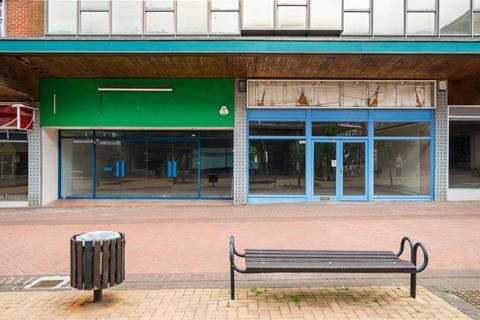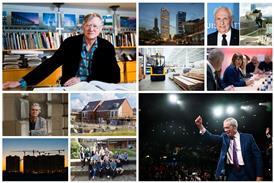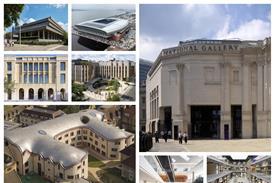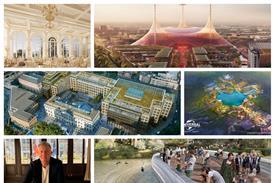Transforming empty retail units into healthcare hubs could revitalise high streets, bringing accessible services to the heart of our communities while supporting sustainable urban regeneration, writes Jim Hart

UK high streets have faced growing challenges in recent years, from declining footfall and the rise of e-commerce to the aftermath of the pandemic. Yet, amidst the struggle to revitalise these once-thriving centres of commerce, a unique opportunity is emerging: the repurposing of vacant retail spaces into healthcare facilities. This innovative solution not only addresses the evolving needs of the healthcare sector but also offers a pathway to reinvigorate town centres. By transforming these spaces into healthcare hubs, we can create sustainable, community-focused environments that support public health and economic recovery simultaneously.
Practical benefits of conversion
Converting retail spaces into healthcare facilities offers several practical benefits. Many high street retail units, particularly those in larger buildings or shopping centres, possess advantageous design features such as high ceilings. These generous floor-to-floor heights allow for the seamless installation of essential mechanical and electrical systems, such as ventilation, air conditioning, and air quality controls – all critical for healthcare environments where patient comfort and clinical needs must be carefully managed.
Repurposing existing structures rather than building new facilities also supports the UK’s net zero carbon targets. Reusing buildings reduces embodied carbon – the carbon footprint generated through the extraction, production, and construction of new materials. This approach, therefore, offers not only economic efficiency but also environmental responsibility, aligning with broader sustainability goals. By choosing to retrofit retail spaces, healthcare providers like the NHS can significantly reduce their environmental impact while addressing the increasing demand for healthcare services.
Design innovations and deep floor plans
Many high street buildings were originally designed with deep floor plans, which can limit access to natural light. While this may seem like a drawback, innovative design approaches can turn this challenge into an opportunity. Traditional healthcare facilities have prioritised natural light in clinical rooms, but with the advent of modern technology and new design strategies, inward-facing layouts can offer both functionality and aesthetic benefits.
Imagine a healthcare hub that hosts regular community events – cooking demonstrations to promote healthy eating, workshops on managing chronic conditions like diabetes, or educational sessions on mental health
By focusing on biophilic design – the integration of natural elements into built environments – these deep, windowless spaces can be reimagined to foster a calming, nature-inspired atmosphere. Elements such as plant features, natural materials, and sky-simulating LED lighting can recreate the sense of being outdoors, providing a soothing environment for patients and staff alike. Central waiting areas or circulation spaces, surrounded by clinical rooms, can be designed with these biophilic elements, transforming what would otherwise be underused space into a therapeutic oasis.
Furthermore, inward-facing designs offer a practical advantage in healthcare: privacy. Using smart glass and partitioning systems such as fin walls, these designs maintain patient confidentiality while providing a sense of openness. The result is an environment that balances functionality, aesthetics, and patient dignity.
Environmental and economic benefits
In addition to the design advantages, repurposing retail spaces for healthcare brings substantial environmental and economic benefits. By adapting existing buildings, the NHS and other healthcare providers can avoid the carbon emissions associated with new construction. Retail units, with their typically deep floor plans, also have reduced solar gain, which can be advantageous in terms of energy efficiency. Buildings that naturally require less cooling consume less energy, which translates into lower operational costs and a smaller carbon footprint.
These efficiencies are crucial as the healthcare sector works to meet net zero carbon goals. By adopting energy-efficient designs and repurposing existing structures, healthcare providers can create facilities that are both financially and environmentally sustainable. This responsible approach not only benefits individual healthcare organisations but also contributes to broader efforts to combat climate change.
Healthcare and prevention: a new role for the high street

Perhaps one of the most exciting opportunities presented by converting retail spaces into healthcare hubs is the potential to promote preventive care in a more accessible, community-centred way. The Darzi Report emphasised the importance of prevention in the future of healthcare, and by locating healthcare facilities on the high street, we can bring preventive services closer to where people live, work, and shop.
Imagine a healthcare hub that hosts regular community events – cooking demonstrations to promote healthy eating, workshops on managing chronic conditions like diabetes, or educational sessions on mental health. By incorporating these events into the design and flow of the space, healthcare centres can offer health education as part of daily life, reducing barriers to access. For example, visitors could encounter a demonstration on preparing nutritious meals during a routine visit to town, making preventive care more approachable and less of an afterthought.
This approach promises to reshape the future of healthcare delivery and the high street itself, fostering healthier, more connected communities
In this way, high street healthcare hubs can foster stronger connections with local communities. By partnering with nearby shops, fitness centres, and other local businesses, these hubs can create a holistic approach to wellbeing. This integration supports both public health and the economic viability of the high street.
Revitalising the high street: a symbiotic relationship
Converting retail spaces into healthcare hubs also offers a direct benefit to town centres. Research from Legal & General indicates that nearly half (48%) of patients visiting healthcare centres located in town centres go on to shop in nearby retail outlets. This mutually beneficial relationship increases footfall, supporting the retail economy while ensuring that healthcare services are conveniently located for the public.
This model represents a win-win scenario for both the healthcare sector and the high street. Healthcare facilities, by attracting people into town centres, help generate the foot traffic that struggling businesses need. In turn, the convenience and accessibility of healthcare in these locations benefit patients and contribute to the overall vibrancy of the area.
A holistic solution for healthcare and town centres
Repurposing vacant retail spaces into healthcare facilities presents a forward-thinking solution to the challenges facing both the healthcare sector and the high street. By addressing healthcare needs through innovative, sustainable design, we can create environments that are both functional and uplifting. At the same time, these facilities can breathe new life into town centres, drawing people in and supporting local economies.
This approach promises to reshape the future of healthcare delivery and the high street itself, fostering healthier, more connected communities. By bringing healthcare to the heart of our towns, we can improve public health access while contributing to the social and economic wellbeing of our local areas. In a time of rapid change, this holistic model offers a remedy for both the healthcare and retail sectors, ensuring that our town centres remain vibrant and relevant for years to come.
>> Also read: High Street: How our town centres can bounce back from the retail crisis
>> Also read: The future of the high street is here… and it’s industrial
Postscript
Jim Hart is director of Corstorphine & Wright
















1 Readers' comment